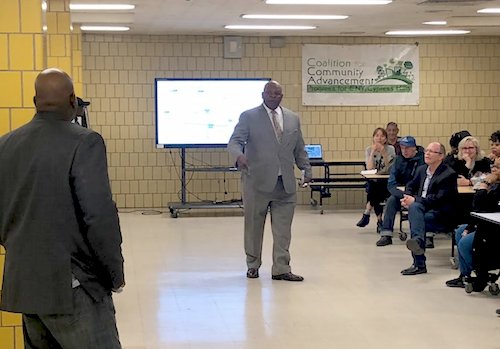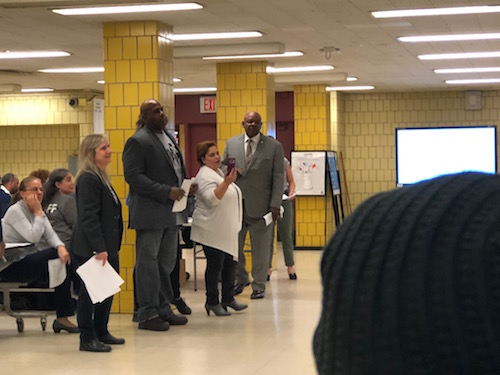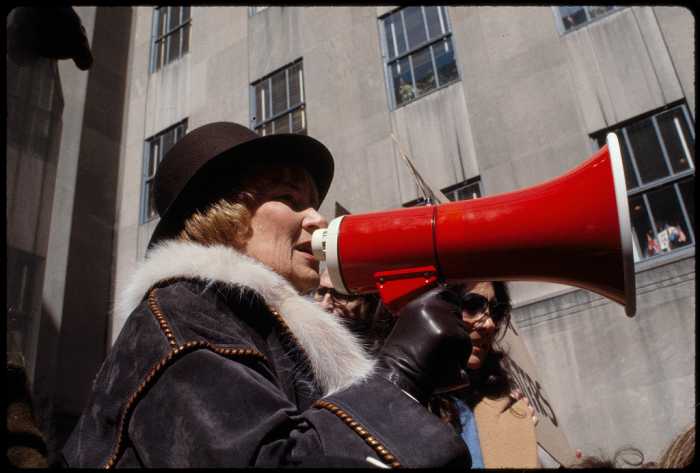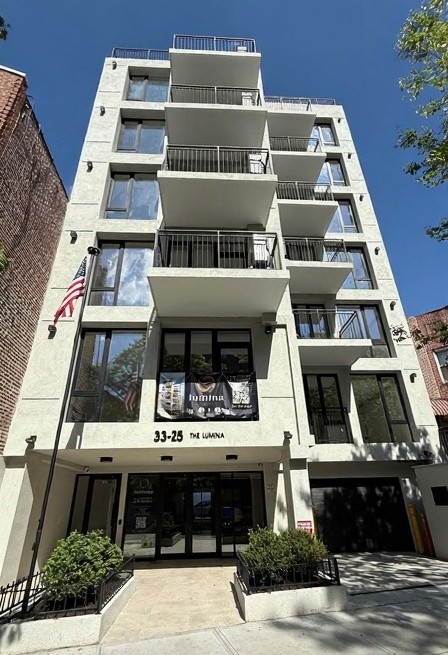A town hall meeting that was supposed to be about the aesthetic changes to East New York’s Broadway Junction turned into a sounding board from local residents and civic leaders about the need for jobs and longtime residents being pushed out amid increasing gentrification.
Broadway Junction is a major transit hub on the East New York/Bedford-Stuyvesant border where several subway lines meet including the A, J, L , C and M trains. It is located roughly at the intersection of Broadway, Fulton Street and Van Sinderen Avenue.


According to the flier for the town hall, which was held at I.S. 292, 301 Vermont Street at Pitkin Avenue, residents would “talk directly to decision makers about what you want for this area.” Brooklyn Borough President Eric Adams, City Council Member Rafael Espinal (D-East New York, Bushwick) and respresntatives from the city’s Economic Development Corporation were invited to attend.
Espinal sent his chief of staff, Lloyd Lesperance on his behalf, and Adams sent his director of land use, Richard Bearak on his behalf. Neither spoke at the meeting, but certainly heard an earful.
“I’ve been telling you meeting after meeting after meeting, this community needs jobs,” said one attendee.
The town hall had several passionate outbursts from members of the Coalition for Community Advancement, a group of community leaders that are working to make sure their voices are heard as the government makes changes to their neighborhoods.

The coalition is not party-affiliated, as Paul Muhammad, a coalition member and chair of the Public Safety Committee for the local community board, said that no matter what political party is in charge, they are working against the residents of East New York.
“They call East New York the gateway to the world,” Muhammad said, “You have JFK, Laguardia and access to Manhattan and Long Island.”
Despite it being such a prime location, Muhammad said the “Demoncrats” and “Rob-You-If-You-Cans” are working to drive long-time residents out of Eastern New York.
“When the mayor said there would be 35,000 residents in the improved areas [after the city passed a mandatory inclusionary rezoning in his first term that allowed for denser redevelopment in exchange for more affordable housing], he meant 35,000 new residents,” Muhammad said, “They are trying to drive us out.
Muhammad, who has lived in East New York for 49 years, said he will not give up on his community. He says the changes in the community violate the Fair Housing Act, since the government claims 50,000 people will be displaced from the actions, most of whom are black and Latino.
“It’s time to fight,” he said, “You are at war for children and your life.”
Albert Scott, the Chairman and CEO of the Homeowners Association Inc. said that the coalition is just not fighting for lights, but for true economic participation.
Scott hopes the community will become more informed from the meeting, and have everyone share their ideas.
“I’m very excited about the turnout and the participation,” he said, “East New York will be constantly growing, and we’re definitely looking for support.”
Scott said that he is fine with changes in the community, as long as they are positive changes for the people who already live there.
“We’re not anti-development,” he said, “We’re anti-displacement of any kind.”
Adams, contacted after the meeting, emphasized the importance of community involvement in the changes to the area.
“The revitalization of Broadway Junction can, must, and will be community-led and community-focused. We are engaged in a long-overdue conversation about the future of this long-neglected transit hub, and that conversation is open and ongoing,” Adams said.
When asked for comment about the concerns raised by the citizens at the town hall, Espinal responded:
“My office along with the Borough President’s office convened the Broadway Junction working group with community stakeholders and key city agencies to come up with a plan on how to invest in this area and I look forward to the suggestions that come from our work,” Espinal said.






